
|
MAIN MENU |
ABOUT CAMBODIA |
RECOMMENDATION |
PHOTO GALLERY |
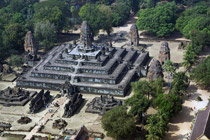




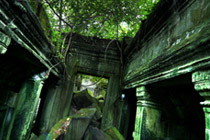

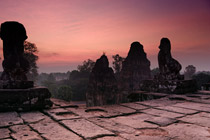


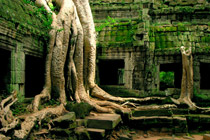
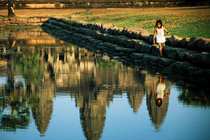
|
Angkor Thom
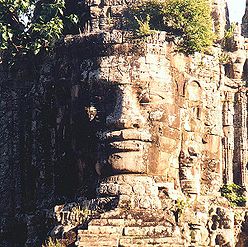
Face-tower of the South Gate, showing Avalokiteshvara.
Angkor Thom (Khmer: អង្គរធំ; literally: "Great City") was the last and most enduring capital city of the Khmer empire. It was established in the late twelfth century by king Jayavarman VII. It covers an area of 9 km², within which are located several monuments from earlier eras as well as those established by Jayavarman and his successors. At the centre of the city is Jayavarman's state temple, the Bayon, with the other major sites clustered around the Victory Square immediately to the north.
Angkor Thom was established as the capital of Jayavarman VII's empire, and was the centre of his massive building programme. One inscription found in the city refers to Jayavarman as the groom and the city as his bride. (Higham, 121)
Angkor Thom seems not to be the first Khmer capital on the site, however. Yasodharapura, dating from three centuries earlier, was centred slightly further northwest, and Angkor Thom overlapped parts of it. The most notable earlier temples within the city are the former state temple of Baphuon, and Phimeanakas, which was incorporated into the Royal Palace. The Khmers did not draw any clear distinctions between Angkor Thom and Yashodharapura: even in the fourteenth century an inscription used the earlier name. (Higham 138) The name of Angkor Thom — great city — was in use from the 16th century.
- Angkor Thom
- Terrace of the Elephants
- Bayon
- Terrace of the Leper King
- Chau Say Tevoda
- Thommanon
- Ta Keo
- Ta Prohm
- Banteay Kdei
- PRASAT KRAVAN TEMPLE
- Pre Rup
- East Mebon
- Ta Som
- Neak Pean
- Preah Khan
- Banteay Samré
- Kbal Spean
- Phnom Kulen
- Beng Mealea
- Preah Ko
- Bakong
- Lolei
Find and Book at our low price |









